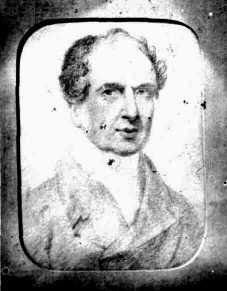
George Wilkinson (music publisher)
Encyclopedia

England
England is a country that is part of the United Kingdom. It shares land borders with Scotland to the north and Wales to the west; the Irish Sea is to the north west, the Celtic Sea to the south west, with the North Sea to the east and the English Channel to the south separating it from continental...
music publisher, and piano
Piano
The piano is a musical instrument played by means of a keyboard. It is one of the most popular instruments in the world. Widely used in classical and jazz music for solo performances, ensemble use, chamber music and accompaniment, the piano is also very popular as an aid to composing and rehearsal...
and candle
Candle
A candle is a solid block or cylinder of wax with an embedded wick, which is lit to provide light, and sometimes heat.Today, most candles are made from paraffin. Candles can also be made from beeswax, soy, other plant waxes, and tallow...
manufacturer.
Wilkinson was the youngest son of Charles Wilkinson. In 1797 he apprenticed to London
London
London is the capital city of :England and the :United Kingdom, the largest metropolitan area in the United Kingdom, and the largest urban zone in the European Union by most measures. Located on the River Thames, London has been a major settlement for two millennia, its history going back to its...
music seller and publisher Francis Broderip, former partner in Longman & Broderip piano manufacturing business which had gone bankrupt in 1795. In 1805 Wilkinson took over his oldest brother Charles' half partnership in the company, which reorganized doing business as Broderip & Wilkinson until Broderip's death in 1807, after which Wilkinson purchased his partner's shares to form Wilkinson & Co. at 3 Great Windmill Street.
By 1808 Wilkinson had arranged for Astor and Leukenfeld to manufacture upright, cabinet pianos licensed from William Southwell's patent (EN 3029, 1807). These instruments (like Petzold
Guillaume-Lebrecht Petzold
Guillaume-Lebrecht Petzold was a piano maker in Paris in the early 19th century.Petzold was born 2 July 1794 in Lichtenhayn, a village in Saxony near Meißen. His father, a Protestant minister, wanted him to learn an artistic trade and in April 1798 brought him to Dresden where he apprenticed with...
& Pfeiffer's harmomelo) were conceived to support the strain of the strings with strong, continuous frames in order to keep better in tune than competing arrangements. Wilkinson & Co. confidently offered a twelve month guarantee for workmanship and tuning, and consequently they were obliged to furnish better replacements when the pianos were found not to "stand well."
In 1810 Wilkinson sold his publishing stock to Thomas Preston, and borrowed £12,000 from his father to enter in a partnership with his foreman Robert Wornum
Robert Wornum
Robert Wornum was a piano maker working in London during the first half of the 19th century. He is best known for introducing small cottage and oblique uprights and an action considered to be the predecessor of the modern upright action which was used in Europe through the early 20th century...
, who had invented improvements in small upright pianos including diagonal stringing and compact actions (EN 3419, 1811). Wilkinson & Wornum established a factory and showrooms near Hanover Square at 315 Oxford street and 11 Princes street, with a lumber yard in the space between them. The warehouse, factory and stables were destroyed by fire in 1812, putting out as many as 70 workmen, and leaving debts over £16,500 with little relief from insurance. In 1813 the partnership dissolved and the company assigned to Wilkinson's father, who excused the partners' debts and made small guarantees to their other creditors. Wornum established another factory, first at 3 Welbeck Street, and that year introduced a vertically strung harmonic pianoforte better known as the cottage piano.
In late 1813 Wilkinson leased a house at 32 Howland Street, and by 1816 he established a piano factory behind the house, as well as 315 Oxford Street
Oxford Street
Oxford Street is a major thoroughfare in the City of Westminster in the West End of London, United Kingdom. It is Europe's busiest shopping street, as well as its most dense, and currently has approximately 300 shops. The street was formerly part of the London-Oxford road which began at Newgate,...
and added showrooms at New Bond Street
Bond Street
Bond Street is a major shopping street in the West End of London that runs north-south through Mayfair between Oxford Street and Piccadilly. It has been a fashionable shopping street since the 18th century and is currently the home of many high price fashion shops...
. This business continued at least through 1830, making at least cabinet upright pianos (praised by Pleyel in 1815) and grand pianos.
Wilkinson entered a partnership with Ferdinand Hirschfeld, and made a specialty manufacturing patented candles with compressed tallow for fuel in order to prevent sputtering and metal wicks to avoid need for snuffing, but these were marketed unsuccessfully. Hirschfeld and Wilkinson, wax chandlers, and oil and spermaceti refiners, at Windsor Terrace, City Road were listed bankrupt 31 July 1835.
In 1854 he left London for Milford Haven avoiding the outbreak of cholera, and died there of a stroke in 1855.
Wilkinson married Elizabeth Cecilia Mary Broadhurst on 23 September 1809. Their children were Ann (1814-1814), Emma (1815-1889), Matilda (1817-1876), Oriana (1818-1853), Louisa (1820-), Alfred Broadhurst Wilkinson (1822-1854), and Henry Broadhurst Wilkinson (1824-). He is buried in Steynton Churchyard.
External links
- Michael Cole, Longman & Broderip
- George Wilkinson grand piano nr.40

